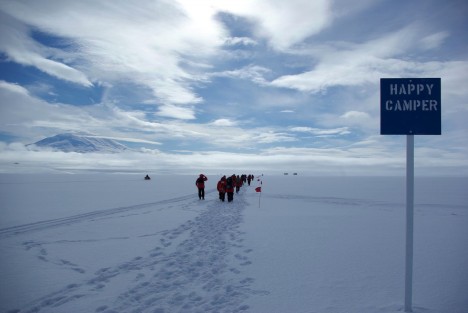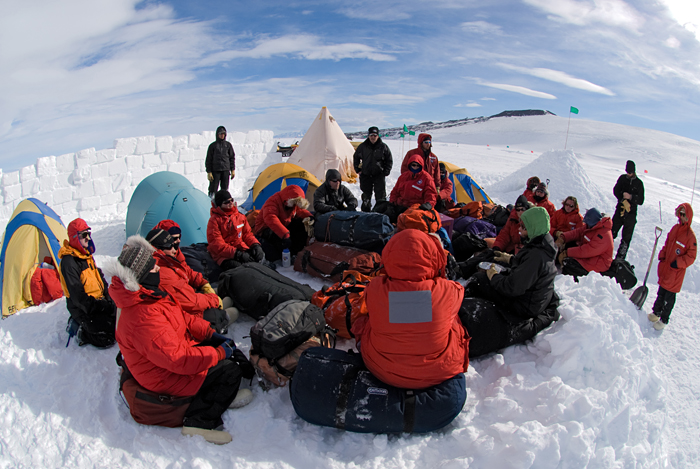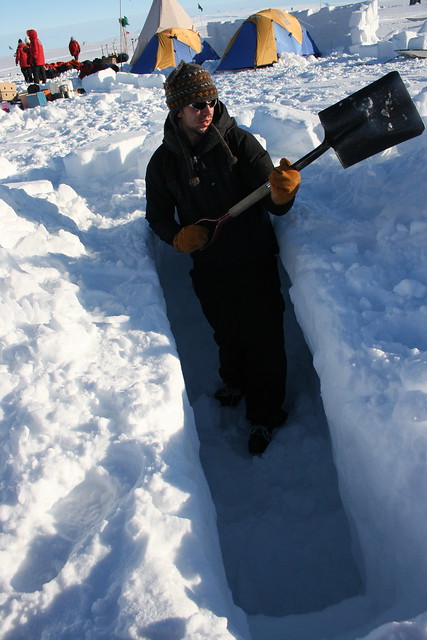The field season has been going great, despite some unseasonably cold and wet weather. We battled snow several days last week--trying to keep the tents dry (no easy thing when you've got a cook stove burning in the tent) and trying to keep the snow out of our samples.
Since we've no place to go, let it snow, let it snow, let is snow...
Snow is a problem for ice and water sampling because it has a very particular chemical and isotopic composition. One of our goals this season was to learn whether there is ancient Garwood River ice hidden in the ground ice deposits in the valley. Finding river ice (sometimes called aufeis) hidden with all this glacier ice would be a big find, since the river ice chemical and isotopic composition could tell us something about what temperature and relative humidity were like in the Dry Valleys during the last ice age (finding paleo-climate records in this part of the world can be surprisingly tricky, so this would be a neat discovery!). Of course, if snow gets into our samples, then we'd learn that ancient river ice in the Garwood looks just like modern snow...which would mean we'd have to throw away our contaminated samples. Still, it sure is pretty!
When the weather cooperated, though, we raced about collecting ice and soil samples, and refurbishing the time lapse video stations that Jay Dickson has been operating. The cameras have been working great, and are producing video that I'll post here soon. Of course, the camera systems require electricity to run, so we've been hauling big car batteries around the valley. The batteries are charged by solar panels. Here's a video of Kelly hauling a battery across the Garwood River. I promise, I put down the camera to help her once she got ashore!
Wanted: 1 pack mule. Must like the cold.
That same snow is keeping the rest of the Cold Dirt team stuck in Christchurch, but I'll introduce them as soon as they're on the ice!






